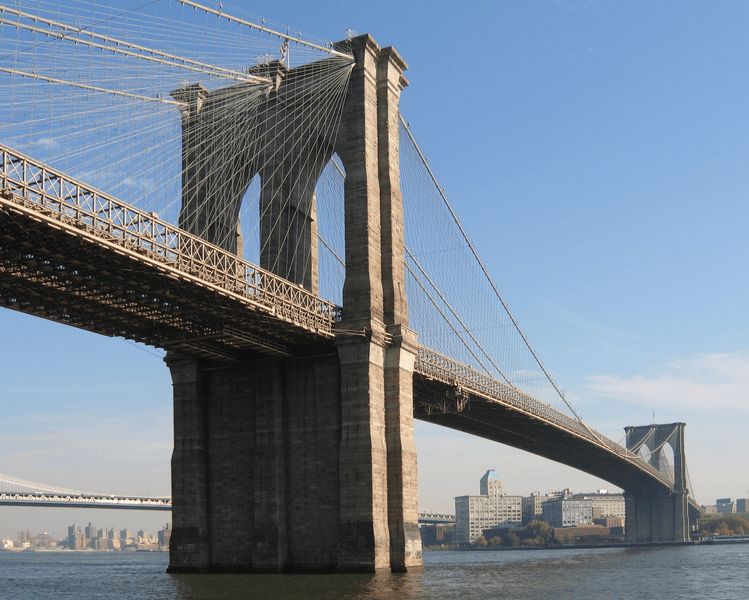Brooklyn Is a Terrible Place to Grow Up If You’re Poor or a Girl

Brooklyn, borough of opportunity—but only if you’re a rich male.
In what is perhaps the least surprising reveal on the lifelong effects of institutional poverty ever, a new study by the Equality of Opportunity Project demonstrates that where you grow up has the potential to make or break your chance at future economic success. In other words, as the New York Times puts it: “Location matters—enormously.” And if your location happens to be Brooklyn, New York? Well, not to put to fine a point on it, but you’re screwed.
The Times has an in-depth look today at this study, helmed by Harvard economists Raj Chetty and Nathaniel Hendren, which studied how much or little upward mobility was predicated on the location of a child’s upbringing as a means to finding a way to better improve the economic prospects of low-income children. What the study reveals, the Times reports is that , “based on the earnings records of millions of families that moved with children, it finds that poor children who grow up in some cities and towns have sharply better odds of escaping poverty than similar poor children elsewhere.”
And which cities are better for escaping poverty? Well, unsurprisingly, they are cities which “have elementary schools with higher test scores, a higher share of two-parent families, greater levels of involvement in civic and religious groups and more residential integration of affluent, middle-class and poor families.” These places include San Francisco, San Diego, Salt Lake City, and Las Vegas. On the other end of the spectrum are cities and counties where poverty seems intractable and upward mobility as likely as keeping a unicorn for a pet. These places include Baltimore, the Bronx… and Brooklyn?
Yes, despite the fact that Brooklyn is the kind of place where even movie stars can’t find good real estate deals, inequality runs rampant here and poverty is entrenched. The study revealed that Brooklyn’s income mobility for children living in poverty places it in the bottom quartile nationwide, and that the only children expected to benefit economically in the future because they grew up in Brooklyn are very wealthy boys. Good that they could finally catch a break, right? Right.
This picture of the bleak prospects for Brooklyn’s youth makes some sense when you consider what the study finds to be essential elements to a fruitful childhood environment: “less segregation by income and race, lower levels of income inequality, better schools, lower rates of violent crime, and a larger share of two-parent households.” Brooklyn is, after all, extremely segregated by both income and race, and has a remarkably stark contrast in the quality of its public schools, as well as in instances of where violent crime occurs.
This latest study refutes previous ones which indicated that upward mobility was actually more likely in Brooklyn and the rest of New York City than it was in other parts of the country; it now seems that those studies relied too heavily on the successes of immigrant populations who are drawn to metropolitan areas like New York, and tend to find economic success at quicker rates than populations which have spent generations in poverty.
But so, on a fundamental level, nothing about this seems all that shocking, does it? It simply confirms certain widely held beliefs that many people have, namely, that many of the long-term negative effects of childhood poverty are the result of situational issues, not of something intrinsically wrong with the actual people. (Well, “widely held” by people who aren’t racist, classist, conservative, reactionary blowhards.) But what do we do with this information? The answer can’t simply be: Move! In fact, the study also demonstrated that the positive effects of moving to a better neighborhood were only significant when the children moved at a young age; those gains vanished when the move happened during teenage years. And, of course, everyone can’t move: The poorest in our society are more firmly stuck than anyone else. So what is the answer then? It seems about as obvious as the findings of the study itself, and starts with the importance of investing in early childhood education in poverty-stricken neighborhoods. Beyond that, though, lies the uncomfortable truth that as long as there remains such gross income inequality and such an imbalance in public infrastructure ranging from access to parks and transportation to adequate public schooling for all New York City schoolchildren, the potential for mobility amid Brooklyn’s most needy will continue to stagnate, before it completely withers and dies.
Follow Kristin Iversen on twitter @kmiversen
You might also like 



















